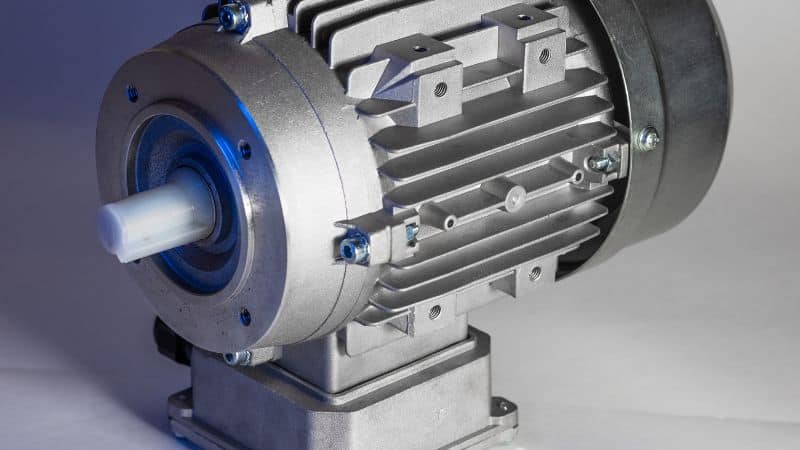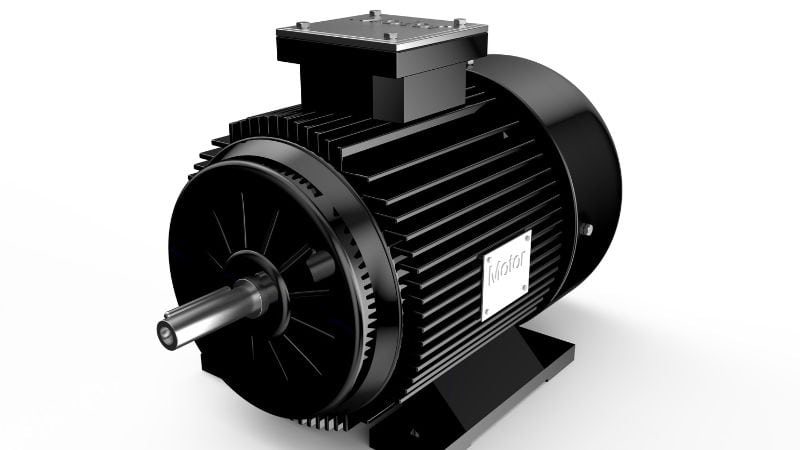A servo motor is an electric motor that provides precise control over movement. It can control position, speed, and torque.
Key components include:
- Rotor: The moving part inside the motor.
- Stator: The stationary part that surrounds the rotor.
- Encoder or Resolver: Devices that provide feedback on the rotor’s position.
- Controller: Adjusts the motor’s action using feedback from the encoder.
How Servo Motors Work
Servo motors use a closed-loop control system. This system ensures the motor follows precise commands based on feedback from sensors. When you set a position, the motor moves to reach it, and adjustments are made along the way.
The encoder or resolver gives real-time feedback about the rotor’s position. The controller processes this feedback and ensures the motor stays on track. This ensures accurate movements and adjustments, giving you control over the motor’s functions.
Different Types of Servo Motors
There are mainly two types of servo motors: DC servos and AC servos.
- DC Motors: Run on direct current. DC servo motors are simple and easy to control.
- AC Motors: Operate on alternating current, suitable for high-power applications. They handle more power and torque, making the ac servo motors ideal for industrial settings.
Servo System and Feedback

Position Control and Feedback Mechanism
Position control means that a servo motor adjusts its position based on commands from its controller. These devices consistently monitor the motor’s position and send this information back to the controller.
If there is a difference between the motor’s current position and the desired position, known as the error signal, the controller makes necessary corrections. This ensures the motor moves exactly to where it needs to be. Feedback mechanisms achieve this precision, allowing servo motors to maintain the exact position and movement you require.
Closed-Loop Control System
In a closed-loop control system, feedback from the motor continuously adjusts its operations. This system includes a controller, a feedback mechanism, and the control circuit. The controller processes information from various feedback systems—like speed feedback from sensors—to keep the motor on its correct path.
A closed-loop system manages not just position, but also speed and torque. Position sensors, such as potentiometers or Hall effect sensors, help keep the system responsive to changes in the motor’s state. This ensures your motor operates smoothly, adapting as needed to maintain accurate and reliable performance.
Servo Motor Design Advantages
Precision and Performance
Servo motors provide you with high precision and precise motion control. These motors are perfect for tasks requiring exact positions and repeatability. They use advanced feedback systems to ensure accurate control over position, speed, and torque.
You’ll find servo motors beneficial because they offer high torque at different speeds. This allows you to use them in complex machinery and robotics. They can quickly start, stop, and reverse, giving you enhanced performance in dynamic applications.
Efficiency and Power
In addition to precision, servo motors are highly efficient. Their design includes power electronics that optimize energy usage, so you get more work done with less power. You’ll notice the benefit of high power density, meaning more power in smaller, lighter packages.
The motors have low inertia, which helps lower energy consumption during operation. This makes them reliable for applications where efficiency is essential. When you need a motor that balances power and efficiency, servo motors are an excellent choice.
Technologies in Servo Motors

Sensing and motion control are crucial for the precise operation of servo motors. Advanced manufacturing methods continue to enhance their efficiency and capabilities, making them essential in various applications.
Sensing and Motion Control
Servo motors use sensors to achieve accurate position control. These sensors, often encoders, provide feedback to the system. This feedback helps the microprocessor adjust the motor’s position with precision.
Pulse Width Modulation (PWM) is a common technique for controlling servo motors. By varying the pulse width, you can control the motor’s speed and position. This technique is vital in applications like robotics and CNC machinery. Understanding PWM is key to mastering servo control.
Servo amplifiers and controllers work together in a servo mechanism to regulate the motor. The driver interprets signals from the sensor and sends the right amount of power to the motor.
Advanced Manufacturing
Servo motors come in many types, such as gearbox and hobby servo models. The gear assembly allows for a compact design while maintaining high torque. This makes them ideal for tight spaces or devices that need high precision without sacrificing speed.
Brushless servo motors are a popular choice due to their efficiency and long life. They use bearings to reduce friction and wear, improving durability.
In manufacturing, the precision and reliability of servo motors help automate complex tasks. From assembling electronics to operating heavy machinery, servo motors are critical. Investing in advanced manufacturing techniques ensures that these motors continue to meet the evolving demands of various industries.
Servo Motor in Die Casting
Servo motors are used in industrial production oftenly.
One of the primary advantages of using servo motors in die casting is their ability to provide precise control over the injection process. In die casting, molten metal is injected into a mold under high pressure. The accuracy of this injection is critical for ensuring that the mold is filled correctly and that the final product meets the required specifications.
Servo motors enable manufacturers to precisely control the speed and position of the injection process. By utilizing closed-loop control systems, servo motors can adjust their actions in real-time based on feedback from sensors. This capability ensures that the molten metal is injected at the optimal speed and pressure, reducing the risk of defects such as voids or incomplete fills.
In addition to precision, servo motors contribute to improved cycle times in die casting operations. Traditional hydraulic systems can be slower and less efficient, leading to longer production times. In contrast, servo motors can achieve faster response times and more efficient movements, allowing for quicker mold filling and ejection processes.
The use of servo motors in die casting also results in improved product quality. With their ability to maintain consistent pressure and speed during the injection process, servo motors help minimize defects in the final product. This consistency is crucial for producing high-quality castings that meet stringent industry standards.
Moreover, the precise control offered by servo motors allows for better management of the cooling and solidification processes. By optimizing these parameters, manufacturers can further enhance the mechanical properties of the cast products, resulting in stronger and more durable components.
Frequently Asked Questions
What are the typical applications of servo motors?
You can find servo motors in robotics for precise movements, CNC machines for accurate positioning, and industrial automation. They are also used in camera autofocus systems and remote-controlled vehicles. Their ability to offer precise control makes them ideal for tasks requiring accuracy.
What are the main differences between servo motors and stepper motors?
Servo motors offer precise control over movement with the use of a feedback system, making them faster and more efficient for dynamic tasks. Stepper motors, however, move in set increments and are best for slow, steady, and simpler movements without needing feedback.
Can you give me other apllictions of servo motor?
Servo motors are essential in various fields, including manufacturing, robotics, and specialized applications, due to their precision and control capabilities.
In manufacturing, they enable accurate movement in CNC machinery and automated processes, enhancing efficiency in tasks like cutting, shaping, and assembly.
Additionally, servo motors play a critical role in robotics and automation, allowing for complex movements and stable control in applications such as aerospace, automotive, and medical equipment.
